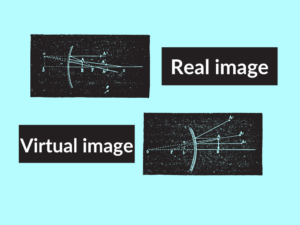Difference between Mirrorless and DSLR Cameras
When it comes to choosing a camera, there are two main types that dominate the market: mirrorless cameras and DSLRs. Both of these options have their own set of advantages and disadvantages, which can make the decision-making process overwhelming. In this article, we will explore the key differences between mirrorless and DSLR cameras to help you make an informed choice based on your photography needs.
What is Mirrorless?
Mirrorless cameras, as the name suggests, do not have a mirror inside the camera body. Instead, they use an electronic viewfinder or LCD screen to display the image. This design eliminates the need for a bulky mirror mechanism, resulting in a more lightweight and compact camera.
Examples of Mirrorless Cameras
– Sony Alpha a7 III
– Fujifilm X-T4
– Canon EOS R6
– Nikon Z6
Uses of Mirrorless Cameras
Mirrorless cameras are highly versatile and used by both professional and amateur photographers alike. They are well-suited for various types of photography, including street, travel, and landscape photography. Their compact size and lighter weight make them ideal for photographers who need to carry their gear for extended periods.
What is DSLR?
DSLR stands for Digital Single-Lens Reflex. These cameras use a mirror mechanism to reflect light into an optical viewfinder, allowing you to see exactly what the lens sees. When the shutter is pressed, the mirror flips up, and the light hits the image sensor, capturing the photograph.
Examples of DSLR Cameras
– Canon EOS 5D Mark IV
– Nikon D850
– Pentax K-1 Mark II
– Sony Alpha a99 II
Uses of DSLR Cameras
DSLR cameras are widely used by professional photographers and enthusiasts who prioritize image quality and versatility. They offer a wide range of lens options, making them suitable for various types of photography, such as sports, wildlife, and studio photography.
Differences Table
| Difference Area | Mirrorless | DSLR |
|---|---|---|
| Size and Weight | Compact and lightweight | Bulky and heavier |
| Viewfinder | Electronic viewfinder/LCD screen | Optical viewfinder |
| Focusing System | Fast and accurate autofocus | Phase detection autofocus |
| Battery Life | Shorter battery life | Longer battery life |
| Image Stabilization | In-body and/or lens-based stabilization | Lens-based stabilization |
| Burst Shooting | High-speed continuous shooting | Slower continuous shooting |
| Video Performance | Excellent video capabilities | Good video capabilities |
| Lens Selection | Expanding lens options | Wide range of lens options |
| Price Range | Wide range of prices | Generally more expensive |
| Learning Curve | Steep learning curve for beginners | Relatively easier to learn |
Conclusion:
In summary, mirrorless cameras and DSLRs have their own set of advantages and disadvantages, catering to different photography preferences. Mirrorless cameras offer compactness, high-speed shooting, and excellent video capabilities, while DSLRs excel in image quality, lens selection, and battery life. The choice ultimately depends on your individual needs, shooting style, and budget.
People Also Ask:
Q: Are mirrorless cameras better than DSLRs?
A: It depends on your specific requirements. Mirrorless cameras are generally more compact and suited for travel photography, while DSLRs offer better battery life and a wider range of lens options.
Q: Do mirrorless cameras have lag?
A: Mirrorless cameras can experience some lag due to the electronic viewfinder, but modern mirrorless models have significantly reduced the lag to provide a near-instantaneous display.
Q: Can I use DSLR lenses on mirrorless cameras?
A: Yes, most mirrorless cameras support the use of DSLR lenses through lens adapters. However, some autofocus features may not be available when using adapted lenses.
Q: Do mirrorless cameras have a smaller sensor?
A: Mirrorless cameras can have various sensor sizes, ranging from APS-C to full-frame, similar to DSLRs. The sensor size depends on the specific camera model.
Q: Which is better for beginners, mirrorless or DSLR?
A: Mirrorless cameras can have a steeper learning curve for beginners due to their advanced features and interface. DSLRs are generally considered more beginner-friendly and easier to learn.


